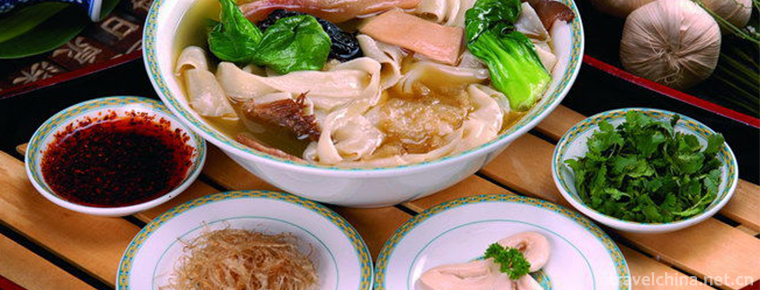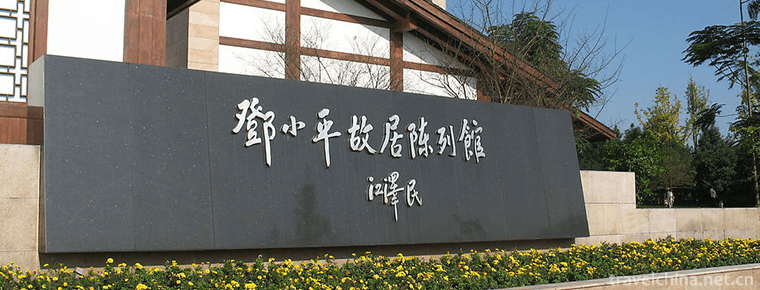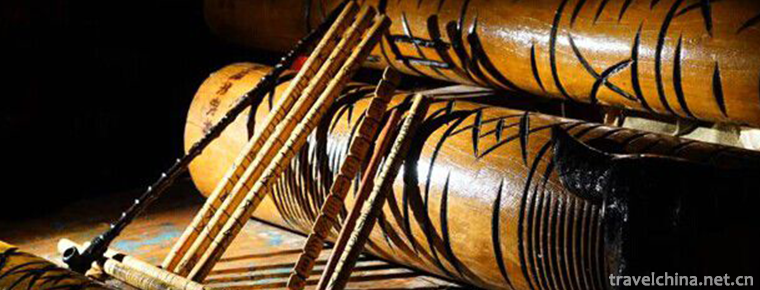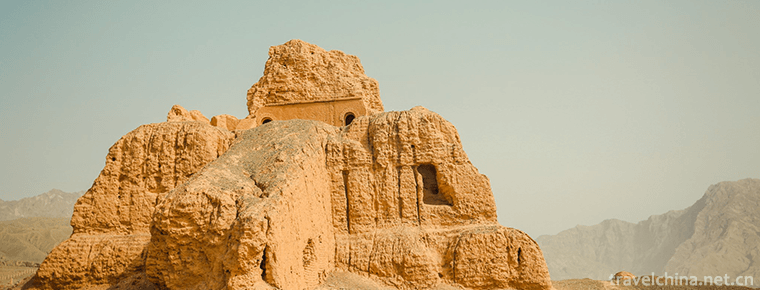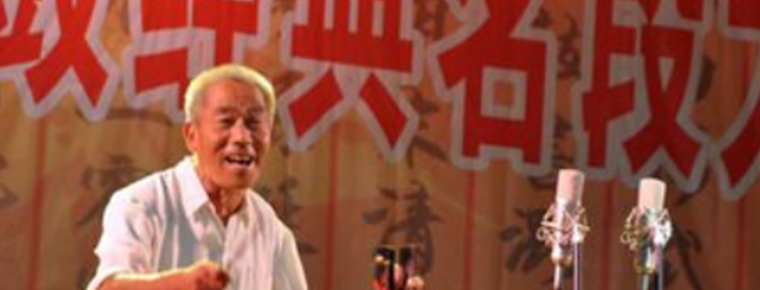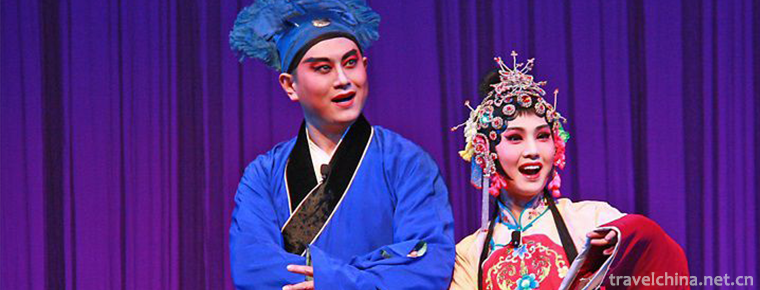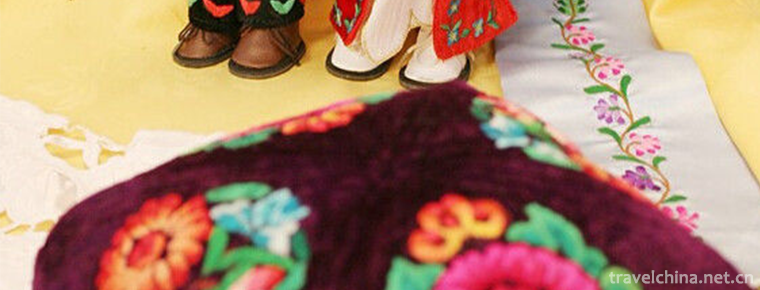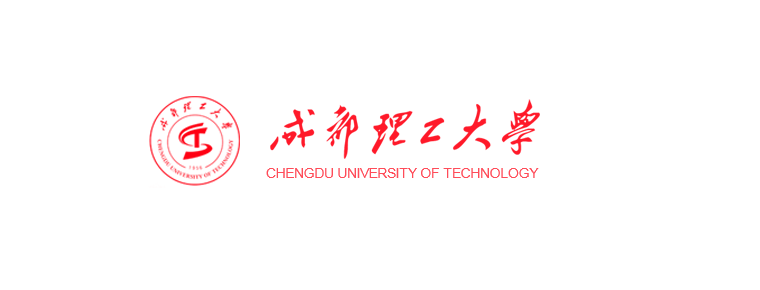Taiping Drum in West Beijing
Taiping Drum in West Beijing
Taiping Drum, a folk dance in Mentougou District of Beijing, is one of the national intangible cultural heritage.
Taiping drum is a kind of traditional dance that the common people entertain themselves, inherit collectively and develop collectively. It has a broad mass base and profound historical origin, and plays an important role in local folk activities. Taiping drums have been circulating in Beijing since the Ming Dynasty. In the early Qing Dynasty, Taiping drums were very popular both inside and outside the capital.
On May 20, 2006, Taiping Drum in West Beijing was listed as the first national intangible cultural heritage list, item number III-1.
historical origin
According to historical records, the Taiping Drum was originally related to exorcism. Taiping Guna Dance originated from ancient witchcraft and is a sacrificial ritual for dispelling evil spirits and eliminating worship. In the Han nationality area of Central Plains, the single sheepskin drum is used as the dispelling device in sacrifice. Drum-beating sacrifice has existed since ancient times, and its basic interest is to dispel the plague and pray for peace.
According to the Book of Rites, Yueling recorded that in the Spring and Autumn Period, there was a minister of nuo, who ordered cattle to be unearthed in order to send cold air. The ancients beat drums and dispelled epidemics on La Ri or the day before La Ri, so they got their name. "Lushi Spring and Autumn Jidong" and "Destiny has the Da Dao's side knock." Han Gao lured: "Today's people were expelled by drums one day before the age of La, which means they were expelled." The ancient custom of beating drums and dispelling reverence in the Spring Festival has a history of more than 2,000 years.
In the Qin and Han Dynasties, the function of drum-fresh sacrifices was weakened and began to appear in banquet scenes to increase the festive atmosphere and become a fashion. According to historical records, drum-holding dances mainly include Pan Dance, Lao Dance, Duo Dance, Fu Dance and Bai Storage. At that time, "Lao Dance" used small drums with handle, which was similar to the shape of Taiping drum. "Laogu" is a dance prop.
In Jin Dynasty, the trend of "Lao Dance" was continued. The performance of "Lao Drum" was mainly used for military and folk sacrifices. Lao Encouragement performed at military banquets and was introduced to the people by official banquets.
During the Northern and Southern Dynasties, although Buddhism developed, Taoism had a great influence on the people. This kind of one-sided sheepskin drum is a magician and Taoist priest: a magic weapon to dispel ghosts and luan.
Tang Dynasty Zhang Ku's poem "Zhou Guan Tuo Zhi on the Outer Court" said: "Drawing drums around brocade arms, Xiao E double change clothes for dancing." "Drawing drum" shows that the drum face is elegant and beautiful, and "drag ring" indicates that the handle of the drum falls with an iron ring. According to the analysis of poetry and prose, it is similar to the dance form of contemporary Taiping drum. This kind of drum is lighter and has all the characteristics of contemporary single-sided sheepskin drum.
The folk of Song Dynasty called Danuo banishing epidemic as "beating Night Hu". According to analysis, the word "interrupting" originated from "beating Night Hu". In the early Song Dynasty, the wax drum was banned and renamed "interruption". "Interruption" is the most popular folk drum dance in Song Dynasty. It is also used for dispelling epidemics and eliminating evil spirits. It also uses single skin drum.
Wang Fuzhi, a thinker in the late Ming and early Qing Dynasties, recorded in Jiang Zhai's Collection of Literature, Miscellaneous Zan and Taiping Drum that during the Chongning and Daguan years of the Northern Song Dynasty, there were drums, flutes and clappers singing in and out of the capital, which was called "interruption". In the early years of Zhenghe, the government banned it and changed its name to "Taiping Drum".
To sum up, the long-standing Taiping drum dance was still mainly used for witchcraft sacrifice in the late Northern Song Dynasty. It was called "interruption" in the late Northern Song Dynasty, and later forbidden by the government, it was renamed "Taiping drum".
Beijing is the capital of Liao and Jin Dynasty. Its national culture is compatible and the traditional culture of Han nationality has been inherited and developed. Buddhism was advocated in the Yuan Dynasty. Buddhist temple fairs in Xizhen State Temple and Daqing Shou Temple were very popular in Beijing. They contained various folk art contents. Taiping drum art also showed good performances.
In Ming Dynasty, the mainstream of Taiping Drum had nothing to do with witchcraft and became a popular folk dance in urban and rural areas. Taiping drum, as a folk dance in Beijing, was finalized in Ming Dynasty. Most of the folk drummers in urban and rural areas were women and children. Late Ming Dynasty "Emperor Beijing Scenery Brief" records: "Boy Lao Drum, at sunset to dawn, called Taiping Drum." This situation of drumming day and night during the Lantern Festival is the expression of the prosperity of the Ming Dynasty's capital economy and people's full of joy.
In the Qing Dynasty, the folk Taiping Drum dance in Beijing was continued, and it was the most popular dance form among the Han people. Taiping drum flourished especially in the Kang and Qian Dynasties. Wang Qishu's Shui Cao Qing Lei Lu and Qian Zai's Yong Taiping drum recorded the grand occasion of playing Taiping drum inside and outside the capital. In the Qing Dynasty, Beijing called the Taiping Drum "the New Year Drum". Every year in December and January, the folk played Taiping Drum, which is the unique result of Beijing's urban and rural villages and towns.
On the New Year's Eve of the Old Calendar, Taiping drums should also be played with the meaning of "peace"; while folk Taiping drums are the pursuit and expectation of peaceful prosperity, national peace and happy life. Taiping drum dance not only enlivens the festival atmosphere, increases the joy of life, but also relies on the people's good psychological needs and aspirations to a certain extent.
He Er of the Qing Dynasty, "Yantai Bamboo Branch Ci": "Iron rings vibrate drums and awnings, and the swimming bladders are coming to an end in groups. See that Taiping has an elephant, Qu's song is the same as the soil song. This is a record of the happy scene of folk playing Taiping drum, and it is also a expression of people's desire for peace and enjoyment of Taiyuan.
According to historical records, during the Ming and Qing Dynasties, during the Spring Festival and Lantern Festival, people used iron circles to make drums, which were shaped like mediocre fans, with iron rings on the handle of drums, beating drums and rocking rings, and singing while dancing. It can be seen that the history of the custom of playing Taiping drums during the Spring Festival in Beijing is very long.
On May 20, 2006, "Taiping Drum in West Beijing" was declared by Mentougou District and was first listed in the first national intangible cultural heritage protection list.
On June 7, 2008, "Shijingshan Taiping Drum" (Shijingshan Mountain) and "Weicun Taiping Drum" (Fengtai District) were listed as the expansion projects of the national intangible cultural heritage project "Jingxi Taiping Drum".
In 2009, the Taiping Drum of Sujiatuo Village and Fangshan District in Haidian District also successively accepted the expansion project of Taiping Drum. The addition of people in these areas enlarged the scope of Taiping Drum in Western Beijing. In line with historical reality, it is conducive to the rich connotation of Taiping drum folk art, and more conducive to the popularization, development and improvement of Taiping drum art.
Inheritance and protection
Inheritance value
From the drum's production technology to its multi-component role of competitiveness, interest and improvisation in dance, the Taiping drum has gone beyond its simple function as a carrier of musical instruments and sound. It has become an instrument with strong regional cultural symbols and a symbol of local people's cultural identity. As a typical traditional folk dance in Beijing, the excavation, rescue and protection of Taiping Drum will promote and promote the development of folk dance in the whole Beijing area. The excavation, rescue and protection of Taiping Drum play a certain role in promoting the enrichment and perfection of Beijing folk culture.
Inheritance status
Weicun Taiping Drum is a contemporary relic of traditional drum culture in northern China, which can provide reference for the study of local history and culture in Beijing. Due to the change of living environment, there are few people in Taiping Drum of Weicun Village, which urgently needs rescue and protection. Villagers in strange villages are devoting themselves to cultivating the reserve force of Taiping drum performance, digging out and sorting out the precious materials that will soon be lost, drawing action maps, and inheriting the popular folk art form of Taiping drum.
Inheriting characters
Gao Hongwei, male, Han nationality, born in 1969, is a native of Sanjiadian Village, Mentougou District, Beijing. In February 2008, Gao Hongwei was selected as the representative successor of the second batch of national intangible cultural heritage projects and declared in Mentougou District, Beijing.
protective measures
In the autumn of 1983, a documentary of Mentougou Taiping Drum was recorded at Jietai Temple and Tanzhili Temple. The organizers were Dong Minzhi and Ruan Lanyu of Beijing Mass Art Museum. The performers were Lu Xianglin, Gao Dianqi, Li Quanyou, Zhang Yucheng, Yan Laotai, Zhang Yuru and Jiao Zhigang of Mentougou Cultural Museum. At that time, Bao Shixuan participated as a consultant of "Ten Integration of Folk Literature and Art" in Mentougou District, and took a number of color photographs of Taiping drum artists and performance scenes, which specifically recorded this historical event.
In March 1984, the Mentougou Cultural Museum held a training course on Taiping Drum, which was held in the Institute of Cultural Museum. The coach is Gao Dianqi, a Taiping drum artist, Jiao Zhigang, a dancing cadre of Lu Xianglin and Cultural Museum, and Dong Xiushen, a music cadre, and Liu Changtai, who are responsible for the control of drum rhythm. There are more than 20 young men and women learners, many of whom later grew up to be the backbone of inheriting the Taiping Drum in Mentougou District.
On June 14, 2008, the first batch of national intangible cultural heritage expansion projects were announced. Taiping Drum in Shijingshan District and Weicun Taiping Drum in Fengtai District were added to the Taiping Drum Project in West Beijing.
social influence
Important activities
On October 1, 1949, when the People's Republic of China was founded, the Taiping Drum Team of Mentougou District came to Tiananmen Square to participate in the celebration performance of the founding ceremony.
In 1952, Fan Baoshan, an artist of Taiping Drum in Xidian Village, Huanmen, held two classes on Taiping Drum. The small coal kiln trade union of Beijing West Mining Area Government changed the name of Taiping Drum to "Peace Drum" to perform folk literature and art for the delegates who participated in the founding meeting of the Chinese Literature and Art Federation (Chinese Federation). The performance of the cultural officials of the working people in Beijing made the Taiping Drum enter the literary and artistic stage of Beijing for the first time. Since then, Taiping Drum folk art in Western Beijing has been recognized by all walks of life.
From 1982 to 1984, Mentougou Lantern Festival Lantern Festival Lantern Festival was held for three consecutive years. At that time, it was the headline news of major newspapers in Beijing. In Mentougou District, the excellent traditional folk culture has appeared a good situation of comprehensive revival.
In April 1988, Mentougou District held the first International Kite Fair. Folk Flower Fair and Taiping Drum participated in the folk art performance at the beginning of the Kite Fair. Since then, many successive sessions have been held, including the eighth Kite Festival in 1995 and the third China Folk Art Festival, Mentougou District, various folk arts have been revived and developed.
In September 1990, Mentougou organized 800 Taiping Drum Performance Team to represent Beijing in the opening ceremony of the 11th Asian Games.
Honorary commendation
In 1956, a literary and artistic group in Beijing participated in the "World Youth Festival" held in Warsaw, Poland, and performed the rearranged Taiping Drum in West Beijing, which won a silver medal. It was the first time that the Taiping Drum in West Beijing was put on the stage of world literary and artistic performance.
In the Spring Festival of 1984, he led the first Longtan Lake Folk Flower Contest in Beijing. With the support of Jiulong Jade Factory, Gao Dianqi and other eight contestants won the Excellent Performance Award.
During the Spring Festival of 1988, Gao Dianqi of Sanjiadian Village led the Taiping Drum Team of Sanjiadian Village to participate in the 4th Longtan Lake Folk Flower Competition and won the first prize.

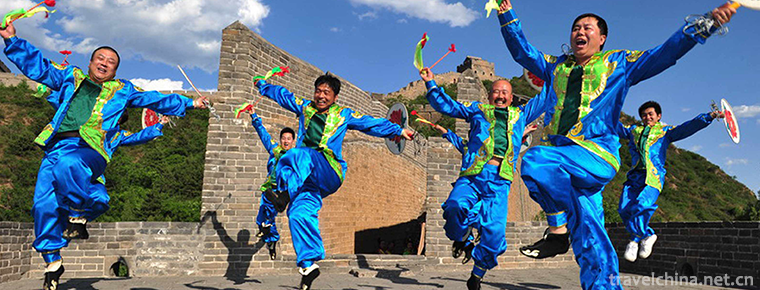
-
Zhengzhou Xiao Ji stewed noodles
Zhengzhou Xiao Ji stewed noodles,Xiao Honghe, the founder of Xiao Ji Yanmian, was a master of Yifumian at Changchun State-owned Hotel in Zhengzhou. .
Views: 177 Time 2018-11-26 -
Fang te tourist area
Fang te tourist area is elaborately built by Huaqiang Fontewen Technology Group. It is a comprehensive leisure tourism resort integrating theme parks.
Views: 185 Time 2018-12-08 -
Deng Xiaopings Hometown Tourist Area
Located in Xiexing Town, Guang'an District, Guang'an City, Sichuan Province, Guang'an City, Deng Xiaoping Hometown Tourist Area covers an area of 3.19 square kilometers.
Views: 122 Time 2018-12-12 -
Kedao
Kedao, the local traditional folk literature of Shibing County, Guizhou Province, is one of the national intangible cultural heritage..
Views: 266 Time 2018-12-15 -
Subashi Buddhist Temple Site
Subashi Buddhist Temple Site , also known as Zhaohuili Temple, is located in the south foot of the Queletag Mountains in the northeast of Kuqa County, Xinjiang. It is a national key.
Views: 157 Time 2019-02-13 -
Lu an drum
Luan drum is a traditional drum book and drum music form with distinct regional characteristics in the north, also known as the "old tune of Lu'an". It is named for its popularity in the are.
Views: 437 Time 2019-05-15 -
Lv Opera
Lv Opera, also known as masqueraded Yangqin and Qinxi Opera, National intangible cultural heritage, one of the eight major Chinese operas, Shandong's most representative local operas, is popular in mo.
Views: 148 Time 2019-05-15 -
Wang Guo Festival
Wangguo Festival is a festival for Tibetan farmers to celebrate a bumper harvest. It is popular in Lhasa, Shigaze, Shannan and other places in Tibet Autonomous Region. The time is between July and Aug.
Views: 130 Time 2019-06-26 -
Uygur Embroidery
Embroidery is one of the most representative decorative techniques in Uygur costumes in China. Whether it is Uygur clothes, skirts, shoes, hats and beds, the interior decorative articles adorn the exq.
Views: 169 Time 2019-06-26 -
Harmonic Qin
In the history of Harmonious Qin, young men and women in Nima Township, Bango County, Naqu Prefecture, Tibet had a tradition of gathering to dance Harmonious Qin. Whether it was the end of farming or .
Views: 294 Time 2019-07-06 -
Chengdu University of Technology
Chengdu University of Technology was founded on March 15, 1956 and approved by the State Council. On March 27, the Ministry of Higher Education and the Ministry of Geology jointly issued a paper based.
Views: 129 Time 2019-08-31 -
Beijing University Of Agriculture
The predecessor of Beijing University of Agriculture, Tongxian agricultural school, Hebei, was founded in 1956. In 1958, Tongxian agricultural school in Hebei province was merged with Beijing agricult.
Views: 323 Time 2019-09-06
